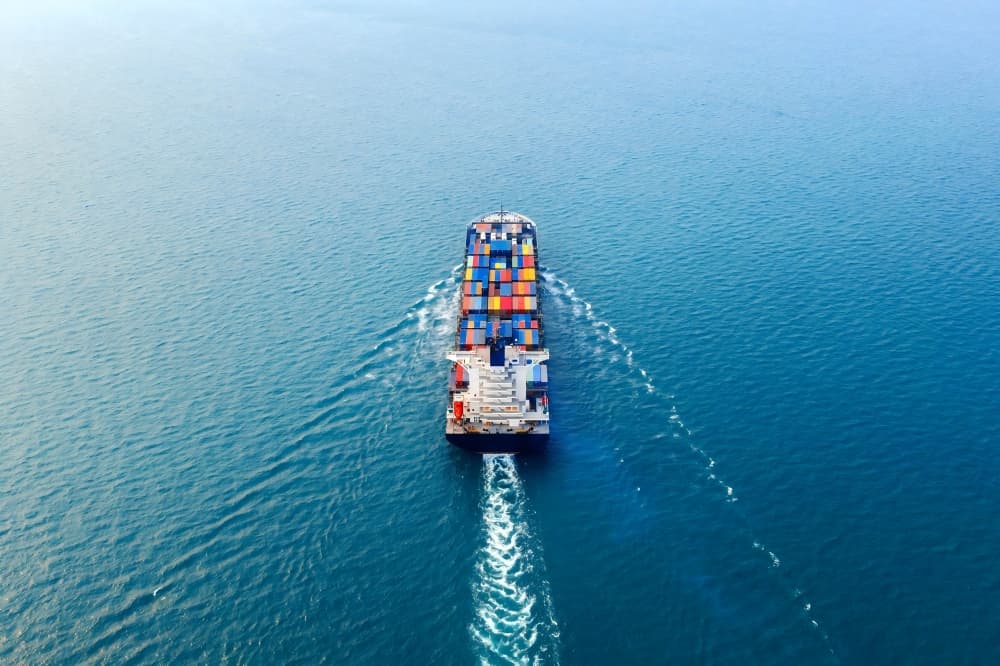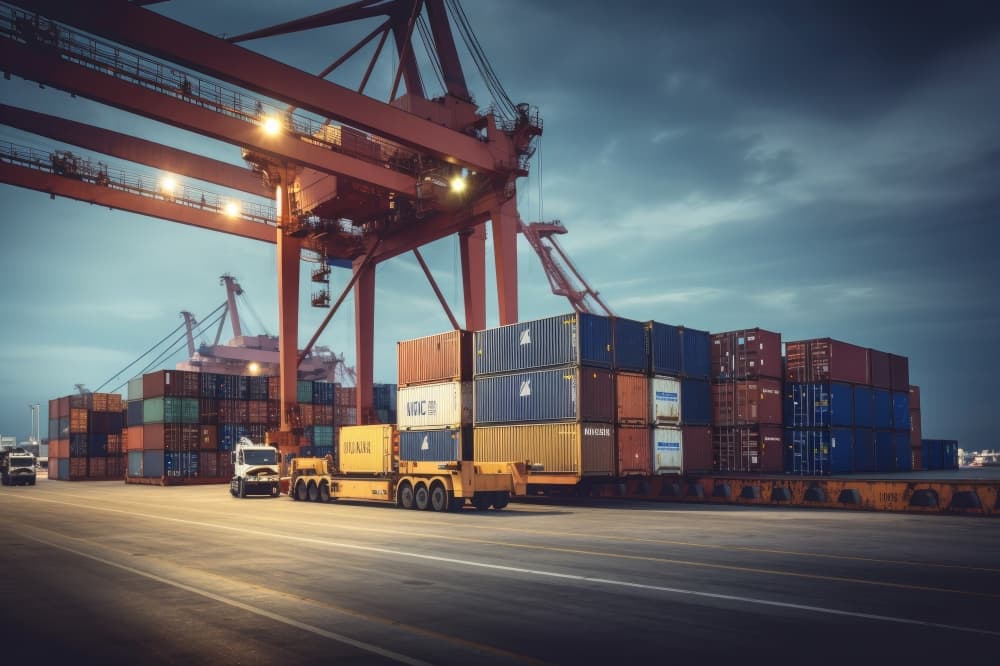How to Ship a 40HQ from Shanghai to Los Angeles Smoothly

Moving a 40-foot high-cube (40HQ) container from Shanghai to Los Angeles involves cooperation among industries such as factories, ports, customs offices, and delivery partners. If you are not familiar with logistics on a global scale and organizing multiple shipments, you should be sure of every step to avoid problems such as delays, fines, and additional expenses. CargoesPi's guide describes a detailed walk-through of the whole process, i.e., shipping request, return of the empty container, and paperwork at each step.
Step-by-Step: How to Ship a 40HQ Container from Shanghai to Los Angeles
Step 1: Confirm Shipping Requests
Specify your cargo requirements by marking its size, weight, cost, and whether it is general cargo, electronics, or hazardous goods.
- All this information enables you to determine the right mode of delivery, how to pack, and which customs documents to deal with.
- Set up your preferred time for delivery and examine if the shipping expected timeline can suit it.
- Proper preparation prevents last-minute, costly problems with your shipment.
Step 2: Book Vessel Space
Purchase your container's allocated space on a ship from a shipping agent or carrier.
- Such routes as Shanghai to LA often fill quickly, thus obtaining your space in advance is essential.
- Determine whether a non-stop journey or more economic steps are required for prioritized time.
- Quick direct delivery is more expensive, but multi-stop journeys are cheaper even though they take longer.
Step 3: Send the Container to the Factory for Loading
The 40HQ is transported back to the supplier's warehouse or factory, which will be used to store your goods.
- Make sure the facility you need can accommodate a 40-foot container and that you have proper loading tools at hand.
- Team members arrange cargo to ensure it is not shaken or broken during the journey.
- Cargo is padded, encapsulated with air cushions, or secured by tie-downs from the motion of the ocean.
Step 4: Return Container to Port
Deliver the container to the Shanghai Port terminal by the stipulated deadline.
- Not meeting the deadline might lead to a delay and increased expenses for the new booking.
- Please provide the carrier with all shipping instructions and information in the container seals at least a day before the due date.
- By doing so, the carrier can handle your booking, which minimizes the chances of unexpected problems.
Step 5: Export Clearance
Your cargo, accompanied by necessary supporting documents, has been sent to Chinese Customs.
- This approval enables your goods to exit the country.
- Customs reviewers may clear it, seek further review, or request additional documentation.
- Delays are possible if the value of the items isn't recorded or if the shipment contains restricted products.
Step 6: File Importer Security Filing (ISF)
Filed by your U.S. importer or broker at least 24 hours before shipment.
- The ISF demands information about the supplier, buyer, and cargo, so it is necessary in U.S. Customs security reviews.
- Failure to file the ISF or making a late submission can result in penalties or clearance problems at the U.S. port.
- Check with your U.S. opposite number that the ISF has been properly filed and has met all timing requirements.
Step 7: Load Onto Vessel to Sail
Your container has been lashed onto the ship and is ready for transport.
- Final efficiency is attained with the intervention of heavy cranes and an accurate stowage plan for cargo.
- Immediately, the container is loaded onto the vessel; the shipping line issues the Bill of Lading.
- The Bill of Lading is a receipt for the cargo needed for customs clearance and discharge at the destination port.
Step 8: Departure from Shanghai Port
The ship leaves from Shanghai and is bound for Los Angeles.
- The average ocean trip takes 15-25 days, depending on weather conditions and the shipping route.
- Regular week departures, even if your vessel is delayed, can be expected to incur almost negligible delays.
- Keeping informed on departure times can help reduce the dangers of long transit periods.
Step 9: Arrival at Port of Los Angeles
Containers are transferred at the port yard for processing once they are offloaded.
- Your cargo is now eligible for customs clearance and attracts terminal handling charges.
- High volumes of cargo may cause interruptions during unloading or transportation.
- Engage a forwarder who knows port procedures to avoid disruptions.
Step 10: Import Clearance in the U.S.
U.S. Customs reviews your ISF, commercial invoice, and other documents to approve cargo release.
- The container cannot be released unless all applicable duties, taxes, and compliance checks have been carried out.
- Some specific cargo may also be subjected to more special inspection by regulatory agencies such as the FDA, USDA, or CBP.
- A high rate of accurate categorization of the cargo minimizes the chances of random checks.
Step 11: Pick Up Container & Final Delivery
The shipping port is where a trucking service picks up the container.
- For transporters, the release order and shipment instructions must be sent before leaving.
- The container is delivered to your warehouse, distribution center, or other specified location.
- Ensure that your receiving area is configured to offload the goods as soon as possible to avoid the accumulation of detention charges.
Step 12: Return Empty Container to Port
You must repatriate the empty container to the shipping company's storage facility.
- The container must usually be returned within the first 5 days or so from pickup with no cost.
- If not returned on time, you face daily detention costs; hence, plan efficient offloading in advance.
- The delivery and unloading must be planned so that the free days are not missed.
Necessary Documentation to Prepare
These documents ensure smooth customs clearance and legal shipment:
- Commercial Invoice: Supplies essentials such as description of goods, their value, and details of the contact of the vendor and the customer. Used as a reference to calculate taxes and duties at customs.
- Packing List: This documentation shows the packaging type, measurement, and quantity of units. Carriers and customs rely on it to verify and examine the shipment.
- Bill of Lading (B/L): Record what was being shipped out and the contractual obligations. The cargo is needed for the release when it reaches the destination.
- ISF Filing (10+2): Must be filed for all ocean imports to the U.S., filed by the importer or their agent before cargo departure.
- Certificate of Origin: Confirms where the goods were made. Useful for trade agreements and duty savings.
- Insurance Certificate: Proof of cargo coverage during transit. Protects against loss, theft, or damage.
- Import Licenses (if applicable): Required for certain restricted or controlled items. Avoid customs holds or rejections by ensuring compliance.
SEA FREIGHT VS AIR FREIGHT -- WHICH IS BETTER?
| Mode | Sea Freight | Air Freight |
|---|---|---|
| Best For | Large, heavy, and less time-sensitive cargo | Small, urgent, or high-value items |
| Cost | Low per kg or CBM | High, especially for bulk goods |
| Transit Time | 15-35 days (depending on route and schedule) | 1-5 days (door to door) |
| Volume | Ideal for full containers (FCL) or consolidated cargo (LCL) | Limited space; high volume = very high cost |
| Environmental Impact | Lower carbon footprint per ton | Much higher carbon footprint |
For a 40HQ container, sea freight or ocean freight is the clear winner in cost-efficiency and capacity as compared to air freight.
TRANSIT TIMES: SHANGHAI TO LOS ANGELES
| Mode | Estimated Time | Notes |
|---|---|---|
| FCL (Full Container Load) | 15-25 days | Port-to-port, add extra time for customs & trucking |
| LCL (Less-than-Container Load) | 20-30 days | Includes extra time for consolidation & deconsolidation |
| Air Freight (Express) | 2-5 days | Fastest but costly; suitable for urgent or high-value cargo |
| Air Freight (Economy) | 5-10 days | More affordable air option, but slightly slower |
When planning timelines, always factor in origin handling, customs clearance, and final delivery.
FREIGHT RATES ESTIMATE (MAY 2025)
| Freight Type | Rate Estimate | Notes |
|---|---|---|
| 40HQ (FCL) | $2,000 - $4,500 | All-in rates depend on carrier, season, fuel, and space availability |
| LCL | $50 - $100 per CBM | Less efficient for large shipments |
| Air Freight | $5.00 - $10.00/kg | Fast but expensive; not ideal for bulk cargo |
CargoesPi can provide accurate quotes based on your exact cargo type and timeline.

TIPS FOR SMOOTH SHIPPING
- Keep yourself safe from last-minute price hikes by booking at least 3-4 weeks prior to your visit by returning to the host. This provides you with a great opportunity to resolve all issues related to documents or packing before your shipment leaves.
- Leave customs and port management to CargoesPi so that you can focus on your core business. We deal with complex logistics, allowing you to focus on your core business.
- Customs clearance may be delayed if your invoice lacks or contains errors. Always review paperwork before submitting.
- Precautiously cover your shipment against unforeseen risks by insuring your Cargo for rough seas and burglary. You get substantial reassurance at a low cost.
- With updates on your shipment, you will be informed about the delivery stages, customs statuses, and estimated arrival times. With that, you will be able to coordinate your warehouse activities and cut order fulfillment time.
Conclusion
Transferring a container of such a size, timely delivery, and cost-effectiveness from Shanghai to Los Angeles involves multiple coherent steps, with thought, proper paperwork, and assistance from reliable logistics companies, such as CargoesPi. You can easily handle all steps. Every aspect of the process, be it the initial details or return of the empty container, is critical for timely delivery and cost-effectiveness.
Get started today
Contact Chinese shipping agent CargoesPi for expert guidance, live rates, and full-service freight support.
FREQUENTLY ASKED QUESTIONS
- Can I track my container live?
Yes! With CargoesPi's real-time tracking options, you can get immediate access to your shipment's system and follow the journey easily, as you will receive real-time notifications on your cargo status. - How many pallets fit in a 40HQ container?
Typically, 20-24 standard pallets (1.2m x 1m). Choose block or column stacking methods to effectively use your container's volume. - What happens if the ISF isn't filed in time?
A violation may result in a fine of up to $5,000 from U.S. Customs. This will delay your shipment and attract further storage costs. - What's the "free time" at the Port of LA?
Usually, there are five days free for container pickup and five days free to return the empty container. After that, storage and detention fees apply daily. - Do I need a U.S. Customs broker?
Yes, for clearance at the U.S. port. A broker helps avoid mistakes, delays, and overpaying duties.

